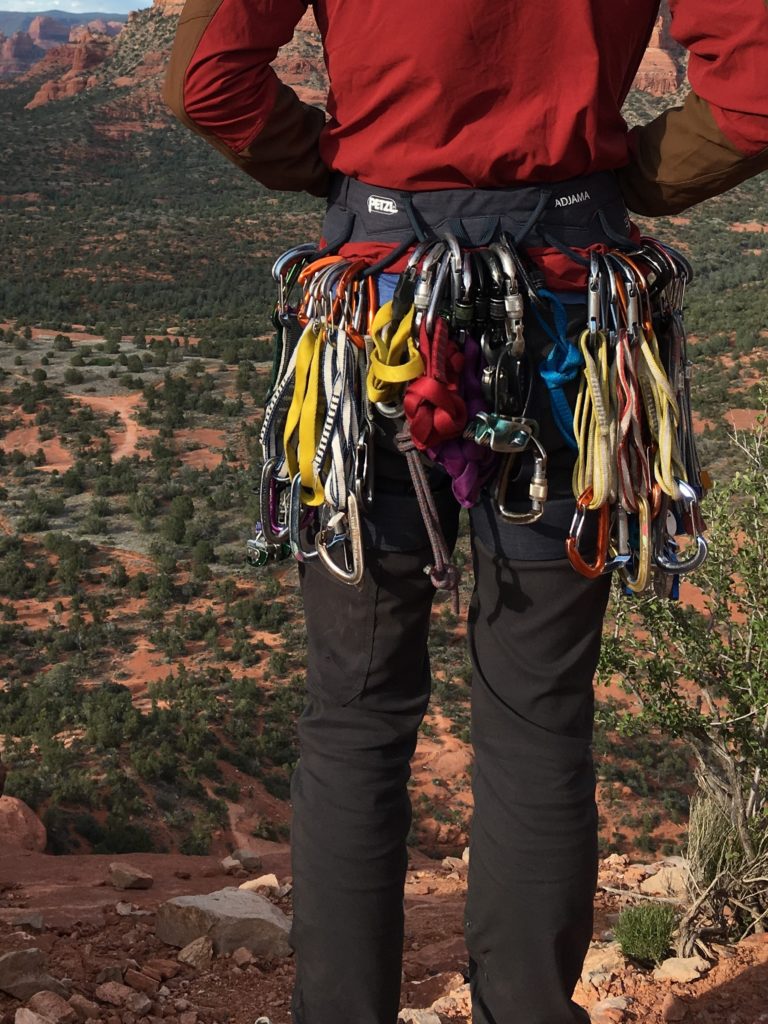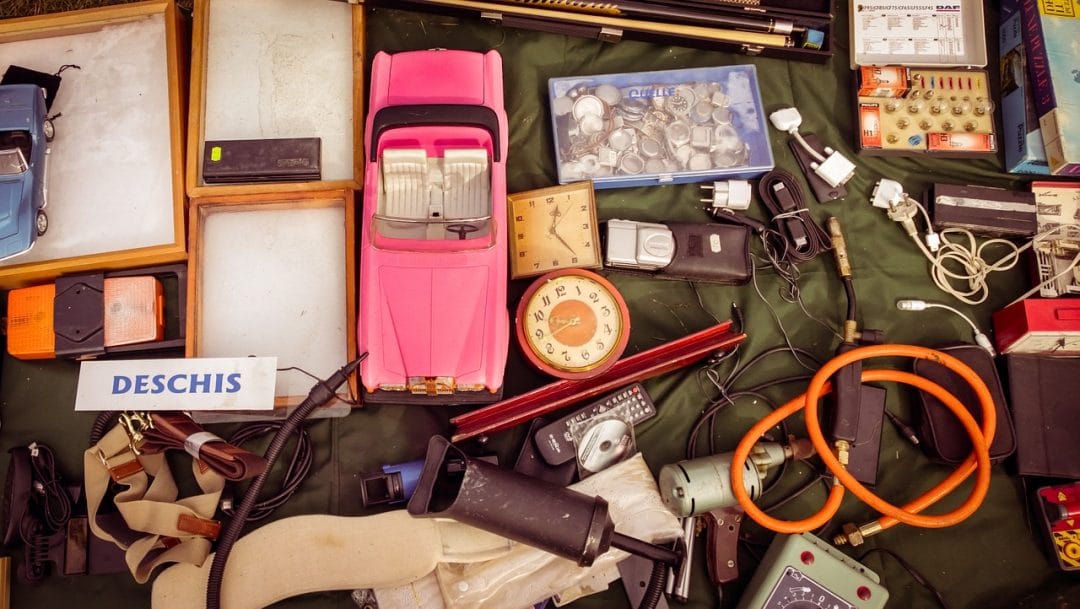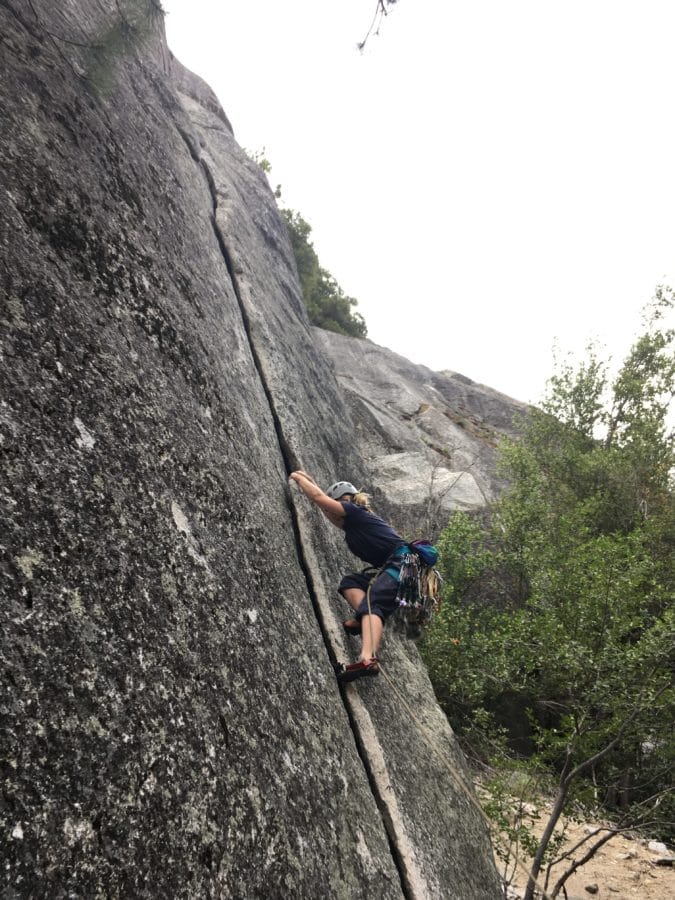Trad for Dirtbag Climbers: Building a Traditional Climbing Rack on a Tight Budget
Table of Contents
Disclaimer: Some of the links embedded below are Affiliate Links. If you click on them, and buy something, I get a juicy commission. It is a mutually beneficial deal, you see. You get come cool new trad climbing gear, and I can pay to finally have my pet dragon neutered.
Edit 6/23/2019. Spelling and Grammar. Added some pictures. One year later, and with many more pitches under my belt, much of this advice still holds true.
Edit 9/2/2019: Added Links
Rock Climbing is an expensive hobby. This is a fact. Unless you stick to some sort of minimalist, padless bouldering style, or you are a devout free soloist, Climbing requires all manner of safety equipment. Many are perfectly happy sticking to bouldering and sport climbing, where the costs are minimal. Some, like me, grew tired of being confined to boulders and bolted routes, and wished to expand their vertical horizons.

Making the jump to Trad Climbing can be expensive, confusing, and at times, scary. A trad climber often needs triple the amount of gear as a sport climber. Cams, nuts, hexes, alpine draws, plenty of slings and tools are needed to climb many of the world’s trad routes. Learning to climb trad requires more discipline, more patience , and more money than sport climbing. A full rack of trad gear can cost a pretty penny, especially if you (like me) bought most of it on a college student’s minimum wage budget.
To help out cash strapped climbers, I’ve compiled a few methods and tips to acquire trad gear on a budget. From buying used, to climbing more mindfully, I have used all of these to save myself hundreds of dollars. I hope that you found these tips to building a Trad Rack on a Budget useful.

Types of Trad Gear
Before you go about spending your hard earned cash, here’s a quick primer on the various types of traditional climbing gear.
Active Protection
Active Protection makes up the bread and butter of trad racks. ‘Active’ refers to any piece of protection that has mechanical, moving parts to aid in it’s placement. This includes all cams, and less common protection like ballnuts. Many companies make cams, but the Black Diamond C4 has become the modern standard.
Passive Protection
Passive protection, as opposed to active, uses no moving parts to protect the climber. Instead, passive protection most often relies on friction, shape, and material to wedge into rock constrictions. Chocks (often called nuts), Hexes, Big Bros, and Tricams are the most common forms of passive protection. Most trad climbers use a basic set of nuts to place where cams just won’t do.
Alpine Draws
Depending on the route, Alpine Draws can be essential to a good trad rack. Basically, an Alpine Draw is composed of two carabiners attached to a sling. Their main purpose is to extend the length of trad placements, thereby reducing rope drag, and improving safety. In a jiffy, an alpine draw can be used to help build an anchor, tie a prussik hitch, or be used for route cleaning. Most climbers will rack 6-12 alpine draws.
Alpine Draws can be purchased pre built, or assembled from extra carabiners and slings.
Other Gear
Ropes
Most any rope will do for trad climbing. But, given the low angle, rocky nature of many trad routes, a stronger, thicker rope is ideal. Generally ropes is the 9.7-10.2mm diameter range last the longest. There’s plenty of good budget friendly climbing ropes out there. If you want my recommendation, I am particularly fond of the Edlerid Boa Eco 9.8mm rope. It is cheap, long lasting, and sustainable!
Helmets
Above any other piece of climbing gear, a rated climbing helmet will do the most good to protect you. I can’t stress this enough. Popular trad climbing areas like Yosemite, Red Rocks, and Indian Creek commonly see rock fall. Falling Rocks, even small ones, are incredibly dangerous.
Any climbing helmet will do the job. The least expensive ones, like the Black Diamond Half Dome, are generally heavier, and a little more bulky, while more expensive ones are sleeker and lightweight. No matter which helmet you choose, ALWAYS WEAR A HELMET!
Become Proficient at Placing Passive Protection

The art of placing passive protection is dying. To many trad climbers, cams may be the only pieces they ever place. Since their inception, cams have changed the way people climb, and have allowed many “unclimbable” lines to see first ascents. A cam is far more versatile than any single piece of passive protection, and are often easier to place.
It is often the case that a trad climber’s rack will tout many well worn cams, all the while their nut set is still shiny and untouched. If you want truly want to build a trad rack on a budget, then learn to place passive protection. For the cost of a single cam, any climber can buy a set of nuts, which will cover more sizes, be lighter, cheaper, and more bomber.
Yes, I dare say that the best nut placement will be safer than the best cam placement. By learning to place passive protection effectively and efficiently, you will not only save money, but will become a more well rounded, versatile, and safe climber. The affordable nature of passive protection comes with other benefits, as well. Nuts, hexes, and tricams can act a cheap bail pieces, and will not be a huge blow to bank account if they become stuck in a crack.
Types of Passive Protection
There are several forms of passive protection available, all of which are deigned to fill a specific niche. The most basic form of passive protection is the chock (A.K.A. The nut). A nut is a simple block of metal, often slightly curved or tapered, and is designed to fit into a constriction in a rack. Offset nuts are nuts designed to fit into awkward flaring placements, while tricams (often referred to as being semi-passive) easily settle into horizontal cracks, as well as pockets (all hail the Pink Tricam!).
Big Bros round out the off width sizes of passive protection. Big Bros are essentially extendable tubes designed to passively fit into a constricting off width. They look like pipes, but they’re spring loaded, and can somehow be trusted to hold a fall.
I am not suggesting that cams are not necessary. Cams are a wonderful tool, and are an important piece in a rack. Instead, learning to embrace the power of passive protection will save you money, and ultimately make you a better climber.
Learn To Climb With Less
Consider this: most of the classic routes were put up long before the invention of Camming devices. They were led entirely on passive gear, much of which was hammered together in someone’s garage. Hexes, nuts, and pitons were the only protection available. When they couldn’t find anything that fit, they just ran it out. Browse the SuperTopo discussion forum, and any old timer will tell you about the good ol’ days when climbers were men, and the lady climbers were also men.
It goes to show that of all the racks of mice and men, you probably only need half as much gear as you really do. If your lead head is solid, and you are a comfortable trad and crack climber, then you may be able to save money by using less gear.
Every trad climber seems to have their own opinion on what constitutes a full, well rounded trad rack. Indian Creek racks not withstanding, many will tell you that you need a double, sometimes triple sized rack. They will recommend sizes and brands of cams, and tell you how many nuts you need. Take many of these recommendations with a grain of salt. While it is nice to have a few extra pieces, trad climbers often find that their triple racks can be excessive.
Instead, learn to lead climb with less. A single rack of Black Diamond cams (.3-3) can get you up many climbs. The composition of a trad rack can vary from region to region, crag to crag. This often means that certain sizes and gear types may be favored more than others. Learn the trad gear requirements of your local area, and you may find that you need far less than you previously thought.
Bringing less gear can be a meditation in resourcefulness, and will make you a more competent climber. The mental game required of trad climbing is fierce, and requires a certain fortitude. Thankfully, you don’t need to have the brain of Alex Honnold to climb minimally. Some climbers have devoted time to studying and developing mental training designed to make you a stronger climber. I have found success by using some of Arno Ilgner’s Warrior’s Way techniques.
Retail Sales
New trad gear can almost always be found on sale. Big online retailers like Backcountry and Moosejaw seem to always have some sort of sale or promotion going on. If you shop around enough, it is easy to find trad gear on sale, often as much as 20-30% off retail. Look for coupons, and use dividend and rewards credit.
For extra savings, try pairing sale discounts with activejunky promotions. Activejunky is a website that uses referral links to get you cash back. It is possible to get an extra 10-15% back using activejunky discounts. The cash back is dispensed every 90 days either by check, or paypal. The proportion of cash back is not always substantial, but can go towards post climb beers.
Another option is to buy in bulk. One can often find cams, nuts, and slings bundled together. It’s not always cheaper, but it saves time and energy. As they say, time is money! To find my favorite trad climbing package deals, check out my list of the best climbing starter kits!
Click For Trad Climbing Gear on Backcountry!
Click For Trad Climbing Gear on Moosejaw!
Buy Used Climbing Gear (with Caution)
The idea of buying used climbing gear is often met with looks of uncertainty and disgust. Your life depends on the condition of the climbing gear, after all. When you don’t know its history, it seems wise to avoid using it.
Yet, myself and many other climbers have had luck buying used climbing gear. A good rule of thumb is that climbing hard goods (cams, passive protection, carabiners), unless obviously deformed, are generally a safe buy. Used soft goods should be subject to much more scrutiny on the part of the buyer. The general climber community consensus seems to be that Nylon will degrade over time, even if stored properly. To stay on the safe side, just avoid any used ropes, harnesses, and slings. Used cams should be reslung with fresh webbing. There are professional reslinging services available, like these folks.
If you do choose to go the used gear route, know this: Buyer Beware. Though I have known the overall climbing community to be cut from good cloth, know that there are some bad eggs. Some sellers might not care about the condition of their wares, and may just be looking for a quick buck. Asking the right questions, as well as vetting the seller can help you separate the good from the bad.
Below, I have outlined several sources from which good, cheap used trad climbing gear can be had.

Ebay
eBay.com is another great place to score affordable trad gear. I’ve bought cams and carabiners from eBay without much trouble, and they are often in good condition. However, if you are not buying new, or you don’t know the source, take extra caution when purchasing climbing gear.
Since it is often hard to tell the condition of any item from photographs, ask questions. Ask about the use history, how it’s been stored, the condition of the slings, etc. If the seller is not replying to your questions, or it seems like they are not being fully honest, then avoid buying from them. Buyer beware.
Click to Buy Trad Climbing Gear on eBay!
Craigslist, Offerup, and Letgo
I got my start in trad climbing with a used rack found on Craigslist.com. It was an old style grigri, a set of Aliens, and some quickdraws. I have since expanded my rack, but I still retain some of that original gear. As a young college student with little money, I was able to get all that gear for a measly chunk of change.
Another website that is great for snagging used gear is offerup.com. Like craigslist, sellers can locally advertise items to sell. Unlike Craigslist, offerup is purely for selling. In my opinion, it has a cleaner and more attractive user interface than craigslist. In my experience, offerup sees less items for sale than craigslist, and they are posted less frequently.
Craigslist and offerup both sport several advantages over online shopping. First, a buyer can visually inspect the gear before buying to ascertain its condition. Second, sellers on craigslist are often open to bartering. The buyer has plenty of room to negotiate a lower price. Third, items bought via craigslist and offerup can be had that same day, allowing for a convenience (yet) unmatched by online shopping.
Mountain Project For Sale Forums
The Mountain Project For Sale Forums are another resource for cheap gear. Here, mountain project users offload gear. Cams, carabiners, chocks, jackets, packs, and a whole panoply of used and outdoor gear can be had for a song.
I’ve purchased several cams from the MoPro for sale forums, all in varying conditions. As with eBay, try to ensure that used gear is in climbable condition. Again, buyer beware.
By purchasing from the For Sale forums, you are supporting the outdoor community. The money goes back into climbers pockets, rather than faceless retailers. Not that there is anything wrong with said retailers, but it is nice knowing that your new (used) piece of climbing gear has a previous history of adventure.
Garage Sales

Garage sales, like craigslist and offerup, allow buyers to handle used gear before they purchase it. If you live in a mountain town, chances are that someone is going to be selling outdoor gear at a garage sale. If you are lucky enough to find used trad gear, garage sales can often be a dirt cheap marketplace.
When people sell items at a garage sale, it is often because they are cleaning out old stuff. Instead of taking the time to price things out, they want to offload it as quickly as possible. As a result, the consumer can often haggle sellers down to bargain bin level prices.
To find a garage sale, drive around a residential neighborhood any given weekend morning. You should see several hand drawn signs posted up with directions to a nearby sale. Online, some people advertise their garage sales on craigslist in the ‘yard sale’ section. If the weather is good, garage sales are easy to find.
Related Side Note: Garage Sales are one of my favorite places to source goods that I can flip for extra cash. This is a tried and true method featured in my Dirtbag Side Hustles Article.
Pro Deals
If you work in the outdoor industry, the military, or as an emergency responder, then you may be eligible for pro deals. Pro deals are discounts on outdoor gear given to employees in these industries. Often, pro deals offer pretty deep discounts, and are a great way to score outdoor gear on the cheap.
Truthfully, many brands do not like pro deal recipients to reveal too many details, so I will not say much more. To get Pro Deals, you can either apply through Pro Deal aggregate websites like Outdoor Prolink and ExpertVoice, or directly through manufacturers.
Pro Tip: When shopping through pro deals, wait for additional promotions. Often, you can find benefits like free shipping and additional discounts atop the base pro deal discount.

Conclusion
Buying your first trad gear is often an important step in the development of a rock climber. It marks a point where many have grown tired of bolts and boulders, and are ready see what the rest of the world of stone has to offer. Just remember to shop sales, buy smart, buy used, and get those slings replaced. Get a few pieces here and there, and soon enough, you’ll have the gear you need to get up any rock in the world.
- The Best Campsites Around Big Bear California - February 26, 2021
- Hiking to the Hollywood Sign Via the Brush Canyon Trail - July 13, 2020
- Dirt Cheap Hiking and Backpacking Gear: The Most Affordable Gear on the Internet - July 4, 2020
